
November 2011
Welcome to Net Results EXPRESS
Net Results EXPRESS (NRx) is an award-winning, monthly e-newsletter highlighting medical and scientific breakthroughs, major grants and honours awarded, and other research-related events at UHN. Through NRx you can read about ongoing research at our five research institutes, the Ontario Cancer Institute (OCI), the Toronto General Research Institute (TGRI), the Toronto Western Research Institute (TWRI), the Toronto Rehabilitation Institute (TRI) and the Techna Institute for the Advancement of Technology for Health (Techna). We hope you will find this newsletter informative and helpful. If you have feedback or questions, please contact www@uhnresearch.ca. Christopher J. Paige, PhD, FCAHS |
UHN and University of Toronto Launch Techna Institute
On November 9th, UHN, in collaboration with the University of Toronto, celebrated the official launch of the Techna Institute for the Advancement of Technology for Health. Techna is a new research institute designed to shorten the time interval from technological discovery to clinical application, while also stimulating the innovation cycle through clinically-driven advancements and translational research. Techna is funded in part from the Princess Margaret Hospital Foundation and a generous donation from Carlo Fidani. The Institute will encourage collaboration through the shared use of multiple existing facilities at UHN including the Spatio-Temporal Targeting and Amplification of Radiation Response (STTARR) Innovation Centre and the Guided Therapeutics (GTx) program. The event was hosted by Techna Institute Director, UHN Head of Radiation Physics and OCI Senior Scientist Dr. David Jaffray. The evening featured introductions to the leadership team, as well as a panel discussion on improving health care through technological innovation. "Techna will cross traditional silos to take research on developing technologies to improve health into the clinic as quickly as possible," says Dr. Jaffray. "Techna provides a framework to help innovation reach the patient." To find out more about Techna, please visit the institute webpage.
|
iDAPT: World Class Innovation at Toronto Rehab
In attendance at the launch were UHN’s President and CEO Dr. Robert Bell, VP Research Dr. Christopher Paige, Toronto Rehab Institute Director Dr. Geoff Fernie and a number of media outlets. Dr. Fernie explains, "iDAPT research will produce new knowledge and innovative treatments that will reduce accidents and illness and help people overcome disability. This research will push the boundaries of rehabilitation science in Canada and beyond." Visit the iDAPT website to find out more about the exciting research taking place at Toronto Rehab. |
Prostate Cancer: Combination Treatment Greatly Improves Survival
The study examined 1,205 men with high-risk prostate cancer who received either hormone therapy—the reduction of male hormones responsible for stimulating the growth of prostate cancer cells—alone or in combination with radiation therapy and followed disease progression over 15 years. Combined therapy improved overall survival by 23 percent and disease-specific survival by 43 percent, compared with hormone therapy alone. "Despite current treatment plans, 4,100 men will die from the disease each year," remarks Dr. Warde. "This study will challenge the prevailing dogma of using hormone therapy alone for locally advanced prostate cancer." Combined androgen deprivation therapy and radiation therapy for locally advanced prostate cancer: a randomised, phase 3 trial. Warde P, Mason M, Ding K, Kirkbride P, Brundage M, Cowan R, Gospodarowicz M, Sanders K, Kostashuk E, Swanson G, Barber J, Hiltz A, Parmar MKB, Sathya J, Anderson J, Hayter C, Hetherington J, Sydes MR, Parulekar W, for the NCIC CTG PR.3/MRC UK PR07 investigators. The Lancet. 2011 Nov 2. [Pubmed abstract] This work was supported by the Canadian Cancer Society Research Institute, the US National Cancer Institute, the Medical Research Council UK and the Princess Margaret Hospital Foundation. |
Cardiology: Sodium Intake Increases the Risk of Sleep Apnea
Fifty-four HF patients were examined for SA and assessed for their dietary sodium intake. The study discovered that sodium intake was higher in patients with SA than those without. In fact, the severity of SA was directly related to the amount of sodium consumed. Impairment of renal function, the ability of the kidney to filter salt and remove it from the blood stream, was also found to relate to the development of SA. Commenting on the implications of this study, Dr. Bradley says: "Targeting sodium intake could alleviate SA in HF patients. In fact, we identified an intake of 2.3 g/day as the lowest level of sodium before it begins to influence development of SA. As it turns out, this is almost identical to the maximum recommended daily sodium intake to prevent the development of high blood pressure and cardiovascular diseases. Further studies examining the effect of reducing sodium levels below that number could give us an idea on how to prevent development of SA in HF patients." Relationship between sodium intake and sleep apnea in patients with heart failure. Kasai T, Arcand J, Allard JP, Mak S, Azevedo ER, Newton GE, Bradley TD. Journal of the American College of Cardiology. 2011 Nov 1. [Pubmed abstract] This work was supported by the Canadian Institutes of Health Research and the Heart and Stroke Foundation of Ontario. |
UHN Educational Tool Licensed to Edwards Lifesciences
Led by TGRI Scientific Associate Dr. Gordon Tait, the PIE team’s Perioperative Patient Simulation is a program that allows clinicians and trainees the opportunity to practice the interventions necessary to achieve hemodynamic stabilization of intraoperative and postoperative patients in critical care. The software provides models of circulation that simulate bleeding, cardiogenic shock and septic shock, demonstrating the value of measuring continuous cardiac output, stroke volume variation, mixed venous oxygen saturation and other variables in treating hemodynamically unstable patients. The simulated patient models create a powerful educational tool that allows for a potentially unlimited number of cases for study by medical practitioners. |
Inflammatory Arthritis: Identifying Risk of Disease Progression
Over 200 AS patients were assessed to identify "progressors"—patients who show worsening damage to the spine as seen through X-ray over time. DNA was isolated from patients’ blood samples and SNPs within five genes associated with immune function were examined for association with disease progression. Dr. Inman’s team found that the baseline severity of the disease itself was an important predictor of progression. Thus patients with more joint damage at baseline were more likely to progressively worsen. Upon examining the SNPs as predictors of disease severity, they identified LMP2—a gene linked to immune function and bone metabolism—as being strongly associated. While further studies are required to identify all of the factors important for AS disease progression, this work has shed light on which patients are more likely to develop severe forms of AS. Since LMP2 plays a critical role in inducing a T cell response, this study highlights the importance of this pathway in the pathogenesis of AS. These findings will help ensure that these patients receive timely diagnosis and will aid in the development of preventative treatments. Radiographic severity in ankylosing spondylitis is associated with polymorphism in large multifunctional peptidase 2 (LMP2) in the SPARCC cohort. Haroon N, Maksymowych W, Rahman P, Tsui F, O'Shea F, Inman R. Arthritis & Rheumatism. 2011 Oct 27. [Pubmed abstract] This work was supported by the Arthritis Society and the Canadian Institutes of Health Research. |
 |
![]()
 UHN applauds Toronto Rehab Director Dr. Geoff Fernie for receiving the first ever Morris (Mickey) Milner Award from the Health Technology Exchange (HTX). This award is presented to an individual or company that has provided a significant contribution in the area of Assistive Technologies and/or Home Healthcare. HTX is funded by the Government of Ontario through the Ministry of Economic Development and Innovation.
UHN applauds Toronto Rehab Director Dr. Geoff Fernie for receiving the first ever Morris (Mickey) Milner Award from the Health Technology Exchange (HTX). This award is presented to an individual or company that has provided a significant contribution in the area of Assistive Technologies and/or Home Healthcare. HTX is funded by the Government of Ontario through the Ministry of Economic Development and Innovation.Feedback
Net Results EXPRESS is brought to you by UHN Research Communications. We hope you have enjoyed receiving this message. If you have any feedback, please email www@uhnresearch.ca.
To access archived issues of Net Results EXPRESS, visit uhnresearch.ca/news/netresultsexpress
Some images adapted from the image archives of stock.xchng.ca.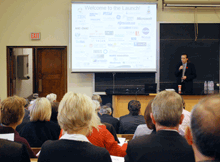

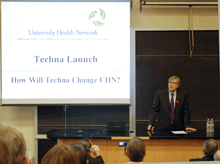

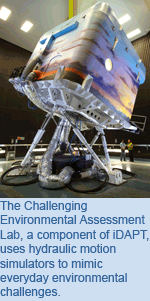 On November 16th, Toronto Rehab launched their new, state-of-the-art research and development facility, called iDAPT (Intelligent Design for Adaptation, Participation and Technology). Developed in collaboration with the University of Toronto, iDAPT is a unique, 65,000 square foot multi-purpose space where research ideas can be cultivated in a life-like setting. It provides researchers with the tools they need to develop new therapies and assistive technologies for people living with a disabling injury or age-related condition. Support for iDAPT came from the Canada Foundation for Innovation and the Government of Ontario through the Ministry of Research and Innovation.
On November 16th, Toronto Rehab launched their new, state-of-the-art research and development facility, called iDAPT (Intelligent Design for Adaptation, Participation and Technology). Developed in collaboration with the University of Toronto, iDAPT is a unique, 65,000 square foot multi-purpose space where research ideas can be cultivated in a life-like setting. It provides researchers with the tools they need to develop new therapies and assistive technologies for people living with a disabling injury or age-related condition. Support for iDAPT came from the Canada Foundation for Innovation and the Government of Ontario through the Ministry of Research and Innovation.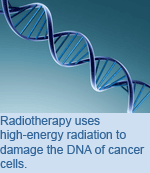 Men with locally advanced or high-risk prostate cancer who receive combined radiation and hormone therapy live longer and are less likely to die from their disease. These findings, published in the prestigious journal The Lancet by OCI Clinician Scientist and Associate Director of Princess Margaret Hospital Radiation Medicine Program Dr.
Men with locally advanced or high-risk prostate cancer who receive combined radiation and hormone therapy live longer and are less likely to die from their disease. These findings, published in the prestigious journal The Lancet by OCI Clinician Scientist and Associate Director of Princess Margaret Hospital Radiation Medicine Program Dr. 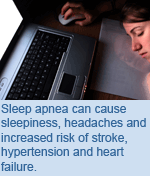 Approximately 50% of all patients with heart failure (HF) also suffer from sleep apnea (SA)—abnormal interruptions in breathing during sleep—increasing the likelihood of mortality. Elevated fluid retention, common in HF patients, is known to increase the risk for development of SA. A study led by TRI and TGRI Senior Scientist Dr.
Approximately 50% of all patients with heart failure (HF) also suffer from sleep apnea (SA)—abnormal interruptions in breathing during sleep—increasing the likelihood of mortality. Elevated fluid retention, common in HF patients, is known to increase the risk for development of SA. A study led by TRI and TGRI Senior Scientist Dr.  UHN has signed a non-exclusive licensing agreement with Edwards Lifesciences regarding stand-alone and web-based simulations developed by the Perioperative Interactive Education (PIE) team in the Department of Anesthesia and Pain Management at the Toronto General Hospital. The agreement, licensed through the Technology Development and Commercialization Office at UHN, allows for a modified version of the Perioperative Patient Simulation software to be used for demonstrating the features and functions of Edwards Lifesciences cardiovascular monitoring devices.
UHN has signed a non-exclusive licensing agreement with Edwards Lifesciences regarding stand-alone and web-based simulations developed by the Perioperative Interactive Education (PIE) team in the Department of Anesthesia and Pain Management at the Toronto General Hospital. The agreement, licensed through the Technology Development and Commercialization Office at UHN, allows for a modified version of the Perioperative Patient Simulation software to be used for demonstrating the features and functions of Edwards Lifesciences cardiovascular monitoring devices.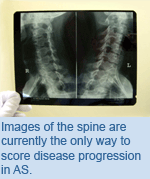 Ankylosing spondylitis (AS), the commonest inflammatory arthritis affecting the spine, is a debilitating autoimmune disease. Because AS is a hereditary disease, a number of genes have been identified that are important for disease predisposition; however, very little is known about disease progression—making it difficult to identify AS patients that are at risk of developing the most severe forms of the disease. Work published in Arthritis & Rheumatism from the lab of TWRI Senior Scientist and AARC Researcher Dr.
Ankylosing spondylitis (AS), the commonest inflammatory arthritis affecting the spine, is a debilitating autoimmune disease. Because AS is a hereditary disease, a number of genes have been identified that are important for disease predisposition; however, very little is known about disease progression—making it difficult to identify AS patients that are at risk of developing the most severe forms of the disease. Work published in Arthritis & Rheumatism from the lab of TWRI Senior Scientist and AARC Researcher Dr.